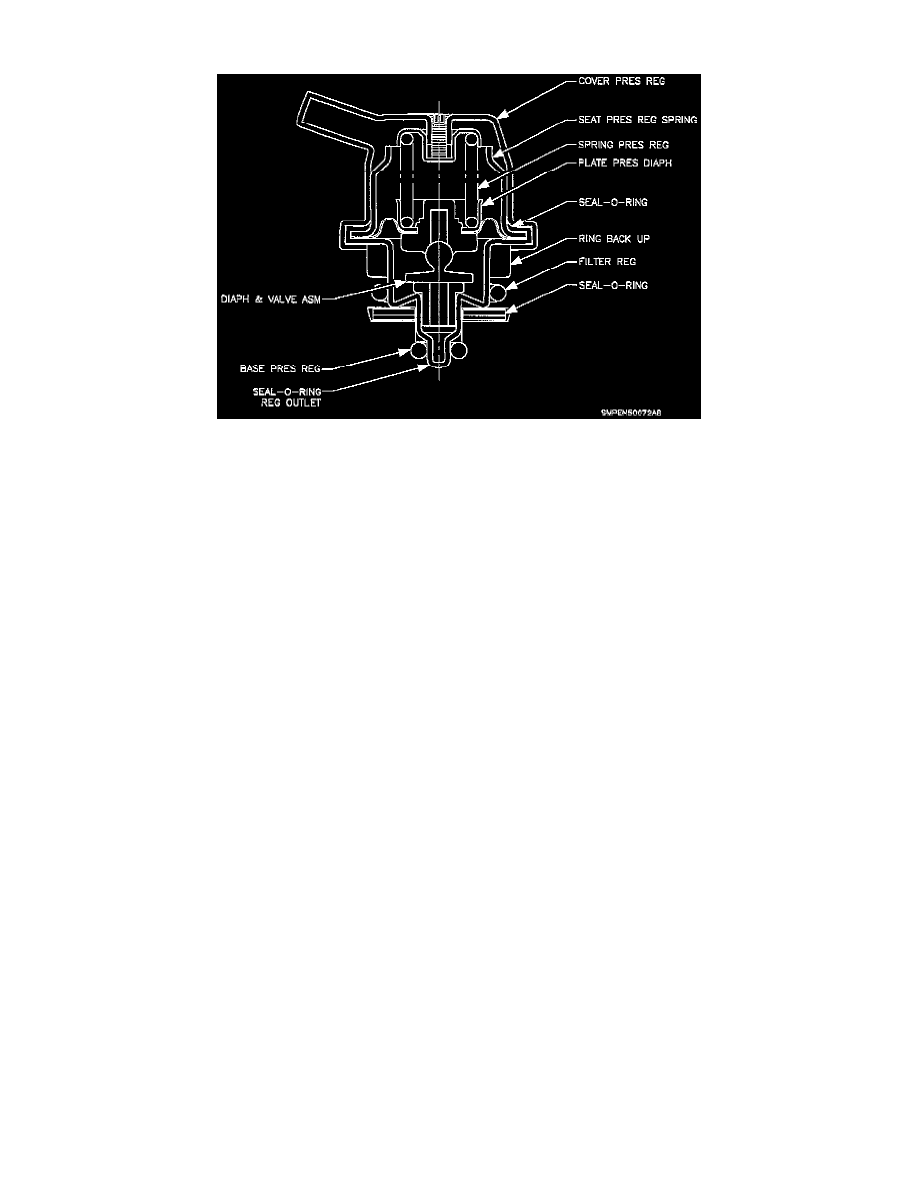SW1 L4-1.9L SOHC VIN 8 (1996)

Fuel Pressure Regulator: Description and Operation
Fuel Pressure Regulator Internal Components
Purpose:
The regulator maintains a constant pressure differential across the fuel injectors at all times by the amount of pressure it takes to lift the diaphragm off
its seat.
Operation:
The pressure regulator assembly is a diaphragm operated relief valve with fuel pump pressure on one side, and regulator spring pressure and intake
manifold vacuum on the other. During idle, a high vacuum signal to the pressure regulator pulls on the diaphragm, helping to lift it off its seat. This
allows for a low fuel pressure during idle. As engine load increases, vacuum drops, allowing the fuel pressure to increase. When vacuum drops to zero,
spring pressure controls fuel pressure. This spring is preset at the factory and no adjustment is required. By varying fuel pressure according to engine
vacuum, a constant pressure differential across the fuel injector openings in maintained. The pressure regulator is mounted at the end of the fuel rail,
and it is serviced as a complete assembly.
With the ignition in the On position and engine Off (zero vacuum), full pressure at the pressure test connection should be 262-306 kPa (38-44 psi). If
the pressure is to lower than specification, poor performance and a DTC P0171 could result. If the pressure is too higher than specification, excessive
odor and a DTC P0172 could result.
